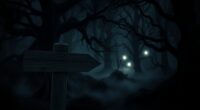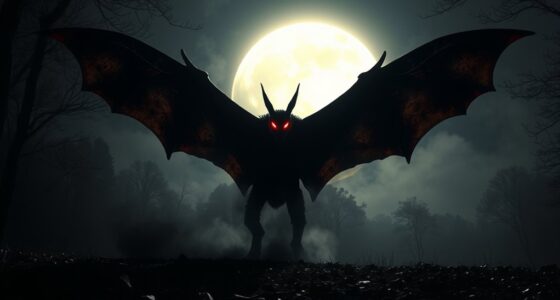The Men in Black (MIB) mystery centers on two main theories: they’re either government agents suppressing UFO witnesses or extraterrestrial beings in disguise. Historically, these figures emerged in the 1950s with accounts of intimidation following UFO sightings, like the Maury Island Incident. Initially portrayed as serious threats, their image shifted over time, especially after the 1997 film. Understanding the origins and evolving narrative of the MIB reveals much more than you might expect.
Key Takeaways
- The Men in Black (MIB) phenomenon began in the 1950s, tied to UFO sightings and witness intimidation.
- Some accounts suggest MIB are government agents tasked with silencing UFO witnesses.
- Others theorize MIB could be extraterrestrial beings disguised as humans.
- Reports describe MIB as having pale skin and unremarkable features, adding to their eerie presence.
- Cultural portrayals of MIB shifted from serious agents to humorous figures, reflecting changing societal views on conspiracy theories.
The Origins of the Men in Black Phenomenon
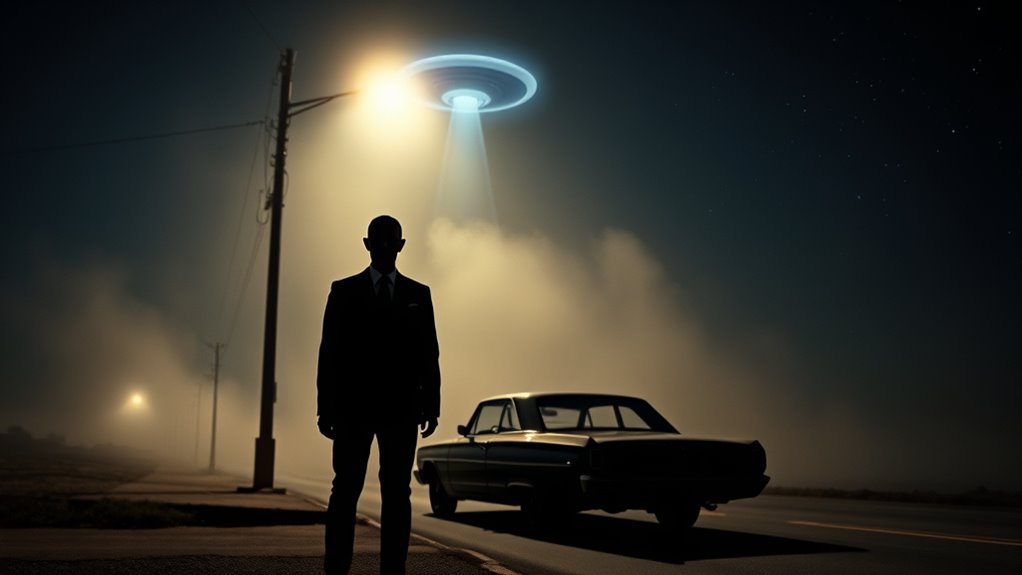
The Men in Black (MIB) phenomenon emerged in the early 1950s, when reports of UFO sightings began to surge. It all started with the establishment of the International Flying Saucer Bureau by Albert K. Bender, who claimed mysterious figures threatened him after he witnessed UFOs.
Bender’s experiences, particularly his unsettling encounters with three men in black suits, contributed greatly to the MIB lore. In 1956, Gray Barker’s book, “They Knew Too Much About Flying Saucers,” popularized these stories, linking MIB to the intimidation of UFO witnesses and fueling conspiracy theories about government cover-ups and extraterrestrial life.
Remarkably, the Maury Island Incident in 1947 is considered one of the first documented MIB encounters, setting a precedent for the ongoing fascination with these shadowy figures.
Encounters and Witness Accounts
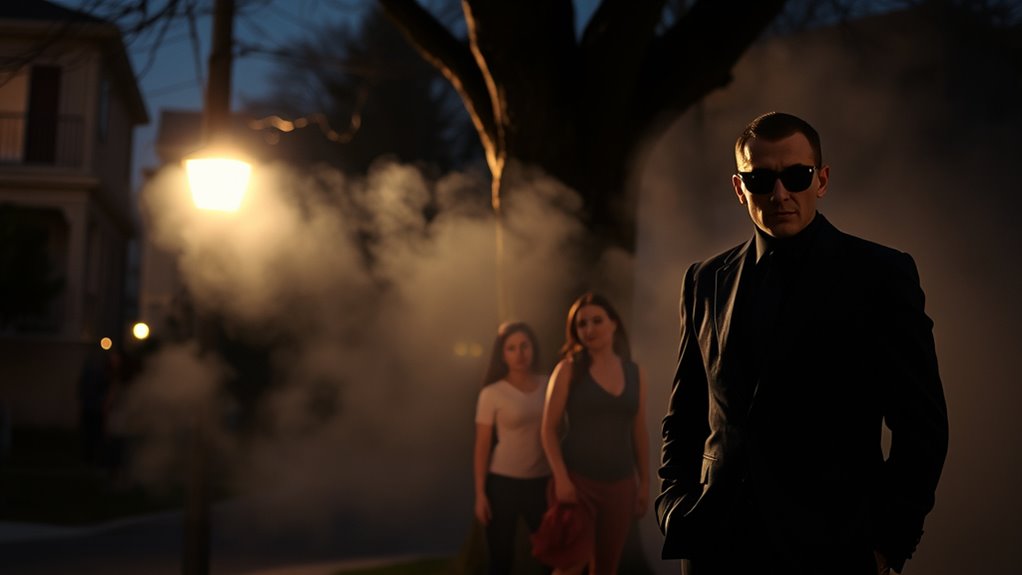
Numerous accounts of Men in Black encounters reveal a consistent pattern of intimidation faced by those who claim to have witnessed UFOs. One of the earliest instances, the Maury Island Incident, involved Harold Dahl, who was warned to stay silent about his sighting. Similarly, Albert Bender’s visit from three MIB prompted him to shut down his organization, cementing his role in MIB lore. Witnesses often describe these figures as having pale skin and ordinary features, appearing in pairs or small groups to enhance their intimidation tactics. Gray Barker’s work in the 1950s helped compile these chilling experiences, which continue to intrigue.
| Account Type | Description |
|---|---|
| Maury Island | Dahl warned to stay silent |
| Albert Bender | Threatened, shut down organization |
| Physical Appearance | Pale skin, ordinary features |
| Group Dynamics | Typically 2-3 MIB present |
| Documentation | Gray Barker’s compilations |
Cultural Impact and Representation
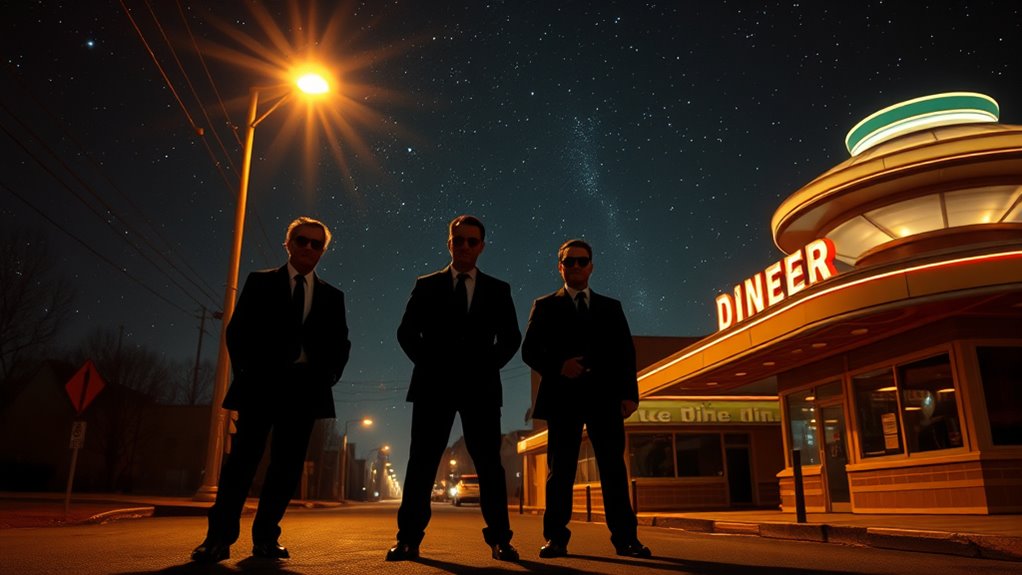
Accounts of Men in Black encounters have sparked fascination not only among UFO enthusiasts but also in popular culture.
Initially depicted as agents of governmental intimidation in Gray Barker’s seminal work, “They Knew Too Much About Flying Saucers,” the Men in Black evolved into cultural icons. Their portrayal shifted dramatically after the 1997 film, blending humor with the mysteries of UFO secrecy.
The Men in Black transitioned from government enforcers to cultural icons, especially after their humorous portrayal in the 1997 film.
This transformation reflects societal changes in how we view conspiracy theories and extraterrestrial life. Today, the Men in Black represent a unique intersection of folklore and modern mythology, echoing our curiosity and fears about the unknown.
Their enduring presence in various media guarantees they remain a significant part of the conversation about UFO phenomena.
Theories Surrounding Their Existence
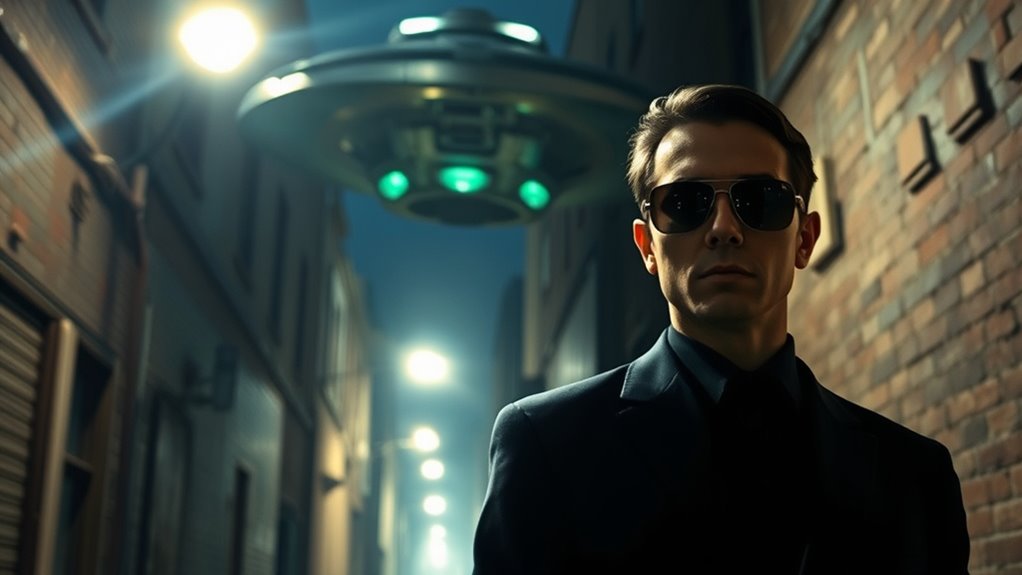
While many people speculate about the true nature of the Men in Black, theories about their existence often fall into two distinct categories: government agents and extraterrestrial beings.
Some believe these figures serve as government agents tasked with silencing UFO witnesses, enforcing a broader agenda to suppress information about extraterrestrial encounters.
Others suggest the MIB might be extraterrestrial beings disguised as humans, using their ordinary features and dark suits to blend in.
Reports often describe them as intimidating figures, reminiscent of a clandestine group called the Silence Group, which allegedly collaborates with both terrestrial and extraterrestrial forces.
This duality in theories fuels ongoing debates about whether the Men in Black are protectors of secrets or harbingers of extraterrestrial knowledge.
The Evolution of the MIB Narrative
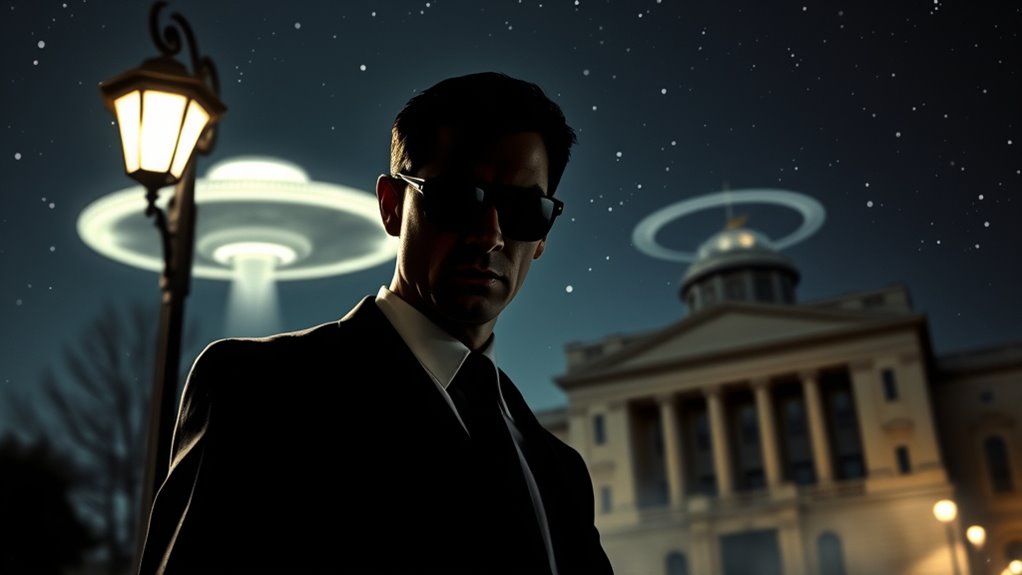
As the fascination with UFOs grew in the 1940s, so did the tales of mysterious figures known as the Men in Black (MIB). Early reports linked them to incidents like Maury Island, where UFO witnesses faced intimidation.
Albert Bender’s chilling encounters with MIB agents in the early 1950s truly shaped the narrative, leading to Gray Barker’s influential book, “They Knew Too Much About Flying Saucers.”
Albert Bender’s eerie encounters with the Men in Black in the 1950s profoundly influenced UFO lore and inspired Gray Barker’s pivotal work.
Over time, these figures evolved from serious government agents to more whimsical portrayals, particularly after the 1997 film adaptation.
Bender’s 1962 work, “Flying Saucers and the Three Men,” further cemented their folkloric nature.
As UFO sightings waned, so did the reports of MIB encounters, reflecting a cultural shift toward a more satirical view of these enigmatic figures.
Frequently Asked Questions
Is Men in Black a Government Agency?
You might wonder if the Men in Black is a government agency. While they’re often depicted in this manner, their true nature remains elusive.
Some believe they started as a government initiative, focusing on alien encounters. However, many argue they’ve evolved into an independent entity, operating under strict secrecy.
Their activities suggest a blend of governmental oversight and autonomous operations, leaving you to question their true affiliation.
Ultimately, the mystery only adds to their intrigue.
Is MIB a Government Agency?
You might’ve heard whispers about a mysterious organization that silences UFO witnesses.
So, is MIB a government agency? Opinions vary, but many believe they operate independently, often posing as federal agents to intimidate those who report sightings.
They’re rumored to have no formal ties to any government, financing themselves through patents on advanced technologies.
The truth is, their existence remains elusive, fueling speculation about whether they’re genuine agents or something much stranger.
Who Are the Aliens in Men in Black?
You might wonder who the aliens in Men in Black are. Some believe they’re extraterrestrial beings disguised as humans, sporting ordinary features but with an unsettling presence.
These aliens often possess advanced technology, hinting at their otherworldly origins. The narrative suggests they might be working alongside a shadowy organization, blurring the lines between human and alien.
As you explore this topic, you’ll find fascinating theories about their intentions and connections to our world.
What Is the Famous Line From Men in Black?
In a world where the extraordinary hides in plain sight, you might recall the famous line from “Men in Black”: “The best way to hide is in plain sight.”
This quote perfectly captures the film’s theme of secrecy and surveillance. It reminds you that sometimes, the most unbelievable things are right in front of you, waiting to be discovered.
It’s a clever twist that keeps you questioning what’s real and what’s hidden.
Conclusion
As you reflect on the Men in Black, you can’t help but feel the tension between fear and fascination. Are they mere government agents shrouded in secrecy, or are they the eerie harbingers of alien encounters? The stories blur the lines of reality and imagination, leaving you to wonder about the truth hidden in shadows. In a world where the extraordinary meets the mundane, the mystery of the Men in Black lingers, inviting you to explore the unknown.

